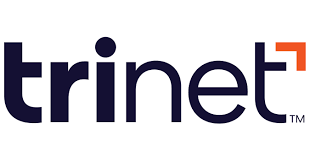How Much Does HR Cost Per Employee?
HR cost per employee can run as little as $6 per employee for basic services, or upwards of $2,500 per employee for a complete and robust plan.
Human Resources (HR) plays a critical role in influencing a company’s success by effectively managing its most valuable asset: its workforce, through various HR tasks and HR functions. Given the essential contributions of HR, it is important to understand the associated costs involved, including outsourcing costs, training costs, and recruitment fees. This article provides a comprehensive overview of HR functions, their significance to an organization, and a detailed analysis of the expenses related to HR activities. We will examine various elements, including salaries, training, and technology investments, and discuss how these costs can affect the overall financial performance of the company. Additionally, practical strategies will be offered for organizations seeking to optimize their HR expenditures. This exploration aims to illuminate the complexities of HR costs and identify opportunities to enhance efficiency and effectiveness within your organization.
What Is Human Resources (HR)?
Human Resources (HR) serves as a strategic partner within an organization, focusing on the management of its most valuable asset—its workforce. HR encompasses a range of functions, including compliance with federal laws, employee recruitment, training programs, employee relations, and the formulation of workplace policies designed to foster a harmonious work environment.
Additionally, HR plays a pivotal role in the creation of an employee handbook that delineates expectations and legal liabilities, thereby protecting the organization from potential employment-related litigation and legal liability.
Why Is HR Important for a Company?
Human Resources (HR) is essential to the success of an organization, as it directly impacts business growth and employee satisfaction through the effective management of human capital, driven by strategic guidance. By implementing strategic guidance in HR functions, organizations can foster a positive workplace culture, enhance employee retention, and ensure workplace safety. HR initiatives such as employee training and development cultivate a skilled workforce that aligns with industry standards, ultimately contributing to the overall performance of the company.
The role of HR encompasses critical areas such as improving employee relations and ensuring compliance with continually evolving legal standards. Through effective communication channels, HR professionals play a pivotal role in resolving conflicts and addressing employee grievances promptly, thereby mitigating risks associated with potential workplace disputes.
- By facilitating open dialogue, organizations can create a supportive atmosphere that encourages teamwork and collaboration.
- Adopting best practices in HR also safeguards businesses from legal pitfalls, protecting them from costly litigation.
- Through regular workshops and training on compliance, including legal changes and safety services, employees are kept informed of their rights and responsibilities.
This proactive approach not only protects the company’s interests but also fosters a sense of belonging and commitment among employees, ultimately leading to a more productive and harmonious work environment.
FEATURED HR PROVIDERS
TriNet (HRO)

Avg. Savings $8,875/Year
Insperity

Full Service HR
Rippling

#1 Rated HRIS
What Are the Costs Associated with HR?
The costs associated with human resources can be substantial and may vary significantly depending on the size of the organization, the industry in which it operates, and the specific HR functions being employed.
Organizations encounter a range of expenses, including vendor charges and service fees:
- outsourcing costs for HR services, including HR outsourcing,
- training costs for employee development and workforce training,
- recruitment fees for attracting talent, including those for recruiting services, and
- legal and compliance fees to ensure adherence to federal regulations and safety regulations.
Additionally, technology and software expenses related to the effective management of HR functions further contribute to the overall financial outlay required for managing human resources within a business, including payroll solutions and compliance assessment.
Salary and Benefits for HR Employees
Salary and benefits for HR employees constitute a substantial portion of the expenses associated with HR functions, necessitating that organizations develop competitive compensation strategies to attract and retain top talent, including considerations for hourly rate and comprehensive employee benefits. A well-structured compensation plan should be aligned with market-based pay practices to ensure that HR professionals feel valued and motivated in their roles, thereby reducing employee turnover.
To effectively design these compensation strategies, it is essential to consider key components such as base salary, bonuses, and comprehensive employee benefits, which are influenced by market-based pay. Organizations should conduct regular and thorough market research to assess salary benchmarks within their industry, enabling them to establish equitable salaries. This approach not only underscores fair pay practices but also fosters a sense of appreciation among employees, which significantly impacts their overall satisfaction and retention.
- The base salary must accurately reflect the individual’s experience, employment history, and performance.
- Bonuses can serve as incentives for exceptional work, thereby motivating employees to excel and stay committed to the organization.
- Employee benefits, such as health insurance and retirement plans, play a crucial role in enhancing job satisfaction and reducing employee turnover.
Ultimately, a strategic compensation plan is directly correlated with the organization’s ability to maintain a skilled and motivated workforce, thereby positively impacting business growth.
Training and Development Costs
Training and development costs represent essential investments for any organization, as they ensure that employees are equipped with the necessary skills and knowledge to excel in their respective roles. Effective workforce training programs not only enhance employee performance but also play a critical role in compliance assessments, sexual harassment training, and the reduction of legal liabilities.
By prioritizing a diverse range of training initiatives, including sexual harassment training, companies can tailor programs to address specific needs while maximizing the potential of their workforce. Examples of such programs include:
- Onboarding: A comprehensive introduction for new employees that covers company culture, roles, and expectations.
- Continued education: Courses or workshops designed to promote skill advancement and encourage professional growth.
- Compliance training: Workshops aimed at ensuring that all employees are well-versed in legal and safety regulations pertinent to their industry.
The costs associated with these training programs can vary significantly based on factors such as the type of training, the delivery method, and the duration. However, the long-term benefits of investing in employee development are substantial. This investment fosters a culture of continuous learning and significantly contributes to employee retention by making individuals feel valued and engaged in their work, thus reducing employee turnover.
Ultimately, organizations that actively invest in their employees tend to experience lower employee turnover rates and increased productivity.

Recruitment and Hiring Expenses
Recruitment and hiring expenses can have a substantial impact on human resources costs, as organizations are required to invest in effective recruiting services to attract qualified candidates.
This includes a variety of recruitment-related costs that organizations must manage, ranging from external recruitment fees charged by agencies seeking top talent to expenses associated with comprehensive background checks that ensure compliance and safety, and the overall hiring process.
Interview-related expenses, which may encompass travel reimbursements, venue costs, and the time invested by current staff, significantly contribute to the overall budget, including considerations for hiring practices and hiring decision. Given these considerations, it is advisable for companies to explore cost-saving strategies such as implementing structured in-house training programs, utilizing employee referrals, or leveraging technology for online recruitment initiatives, and considering vendor charges.
Potential strategies include:
- Adopting an Employee Referral Program
- Utilizing Social Media for Hiring
- Implementing an Applicant Tracking System and creating detailed job descriptions
Legal and Compliance Fees and HR Outsourcing
Legal and compliance fees represent a significant component of human resources costs, as organizations are required to adhere to federal laws and regulations to mitigate legal liability and avert potential employment-related lawsuits. Noncompliance with workplace safety standards can result in substantial penalties, underscoring the necessity for human resources to prioritize compliance initiatives.
Along with navigating the complexities of employment law, organizations incur various legal and compliance fees associated with safety regulations, particularly those mandated by the Occupational Safety and Health Administration (OSHA). These fees may encompass costs for necessary safety audits, training programs, and periodic inspections to ensure adherence to health and safety standards.
Organizations must also allocate budgetary resources for legal consultation expenses that may arise from employee grievances or disputes, including consulting packages and contractor services. These expenses may include costs associated with risk management, legal standards, and industry standards:
- Employment law fees
- OSHA compliance costs
- Employee relations dispute costs
Implementing proactive compliance measures, such as regular training and updating policies, including workplace policies, is essential. By investing in these areas, businesses not only safeguard themselves against significant fines but also cultivate a positive work environment that enhances employee satisfaction and retention.
Technology and Software Costs
Technology and software expenses have become increasingly significant in HR management, as organizations utilize various tools to optimize their HR functions and enhance operational efficiency. These costs typically encompass subscription fees for HR software, compliance assessment tools, and potential vendor charges linked to outsourcing specific HR services.
A comprehensive understanding of the spectrum of HR technology is essential for any organization seeking to refine its processes. Various categories exist, including applicant tracking systems (ATS) that facilitate recruitment and performance management tools that effectively monitor employee progress. Platforms dedicated to payroll management and benefits administration ensure that financial operations are conducted seamlessly.
- Automated HR solutions enable faster decision-making and reduce workplace conflicts.
- Cloud-based software provides remote access, allowing management from any location.
- Employee self-service portals improve user experience and alleviate administrative burdens.
Ultimately, investing in such technology not only fosters a more engaged workforce but also results in substantial cost savings through streamlined operations and minimized errors, helping organizations manage their HR costs effectively. This, in turn, allows HR professionals to concentrate on strategic initiatives rather than routine tasks.
What’s The Cost of HR per Employee?
Understanding the cost of HR per employee is crucial for organizations to effectively budget their HR functions and assess the overall investment in human capital.
The per-employee cost may vary based on several factors, including outsourcing expenses, compliance assessment requirements, and the complexity of the HR services being utilized, as noted by the Bureau of Labor Statistics.
Average HR Costs per Employee
The average human resources (HR) costs per employee can vary significantly, influenced by factors such as company size, industry standards, and the specific HR functions provided. Organizations typically incur costs related to compliance, training programs, and general HR administration, all of which can substantially impact their overall budget.
For example, small businesses generally allocate between $500 and $2,000 per employee annually, while larger enterprises may experience average costs ranging from $1,000 to $3,000, depending on their compensation strategy. These variances are particularly noticeable across different industries, where HR outsourcing and service customization play critical roles:
- Healthcare: Significant expenditures arise due to extensive compliance requirements, with an average cost of approximately $2,800 per employee.
- Technology: Companies in this sector often make substantial investments in training and talent acquisition, resulting in average expenses of around $3,500.
- Retail: In contrast, retail organizations may report lower averages of approximately $1,200, reflecting less comprehensive HR needs.
Understanding these averages is essential for organizations when planning their budgets, as tailored HR functions can facilitate more strategic investments and address cost variability. These insights can inform decisions aimed at enhancing employee engagement and optimizing workforce management.
Factors That Affect HR Costs per Employee
Several factors influence HR costs per employee, including employee demographics, business growth objectives, and the decision to outsource specific HR functions. Compliance with legal standards and regulatory requirements can significantly affect the overall expenses incurred by HR departments.

The prevailing economic conditions in a region also play a critical role, as fluctuations in the job market, inflation rates, and employment laws can directly impact HR expenditures. Understanding industry standards is equally important, as different sectors often have diverse expectations regarding salaries and benefits.
Specific organizational needs, such as recruiting strategies, talent management, and workforce training initiatives, can further increase these costs.
To effectively navigate this complex landscape, business owner and HR professionals must consider both internal and external factors:
- Internal Factors: Organizational culture, employee turnover rates, technology integration, and service customization.
- External Factors: Market competition, regulatory changes, and economic cycles.
By evaluating these elements, HR departments can make more informed budgeting decisions that align with overall business objectives and potentially prevent employment lawsuits.
How Can Companies Reduce HR Costs per Employee?
Organizations can substantially decrease HR costs per employee by implementing strategic initiatives such as outsourcing HR functions, utilizing HR technology, and optimizing HR processes.
These methods not only reduce expenses but also improve efficiency and service flexibility, allowing companies to concentrate on their core business activities, guided by industry standards from industry associations.
Outsourcing HR Functions
Outsourcing human resources (HR) functions can yield significant cost savings for organizations while providing access to specialized expertise, particularly advantageous for small to medium-sized businesses in states like New York and Connecticut. By collaborating with HR vendors, companies can streamline their operations and enhance employee satisfaction through improved HR services.
When considering outsourcing HR functions, organizations typically evaluate a range of services that can be effectively managed externally. Key functions that are particularly suitable for outsourcing include:
- Payroll solutions
- Compliance assessments
- Recruitment processes
- Employee training programs
- Benefits administration
- Risk management
These functions are ideal candidates for outsourcing due to their inherent complexity and the ongoing demand for current expertise.
Organizations that opt to outsource these HR functions frequently experience substantial cost benefits, as they can reduce overhead and eliminate the necessity for in-house staff dedicated exclusively to these tasks, often choosing Complete Payroll Solutions as their trusted HR vendors.
It is essential to address potential challenges, such as maintaining control over company culture and ensuring clear communication between internal teams and external partners. Effectively navigating these complexities can lead to enhanced operational efficiency, ultimately contributing to a more engaged and productive workforce.
Implementing HR Technology
Implementing HR technology can significantly enhance operational efficiency and lead to considerable cost reductions for organizations, improving their overall compensation strategy. By utilizing software solutions and automation, HR departments are able to streamline essential tasks, including recruitment, employee training, and compliance management.
Leveraging advanced tools such as Human Resource Information Systems (HRIS) provides integrative functionalities that deliver real-time data analytics, thereby enhancing decision-making processes and strategic planning. Organizations can also derive substantial benefits from applicant tracking systems (ATS), which not only simplify the hiring process but also facilitate a better alignment between candidates and positions.
These technologies promote a more engaging employee experience by enabling personalized onboarding and continuous development opportunities, ultimately resulting in increased retention rates, while adhering to OSHA regulations for workplace safety.
Key benefits include:
- Improved communication and feedback loops between HR and employees.
- Streamlined processes that mitigate administrative burdens.
- Enhanced data management for compliance and reporting.
In the long run, these technological advancements contribute to a healthier bottom line, ensuring that organizations remain competitive in an increasingly dynamic market.
Streamlining HR Processes
Streamlining human resources processes is a critical step in reducing overall HR costs while maintaining high levels of efficiency and employee satisfaction. By identifying bottlenecks and optimizing workflows, organizations can enhance employee relations and ensure the effective delivery of training programs, which is a critical component of HR tasks.
To achieve these objectives, organizations may implement distinct strategies centered around three core principles: standardization, automation, and enhanced communication.
- Standardizing procedures across departments can minimize discrepancies and establish a cohesive approach to HR tasks, thereby promoting consistency in hiring, onboarding, and performance evaluations.
- Automating repetitive tasks, such as payroll processing and record-keeping, allows HR professionals to concentrate on strategic initiatives instead of routine activities, ultimately fostering greater productivity.
- Enhancing communication channels ensures that employees have easy access to important information and support, which can lead to higher engagement levels and improved responsiveness.
Moreover, emphasizing the significance of continuous improvement through the regular solicitation of employee feedback can assist in identifying additional areas for efficiency gains, thereby creating a more adaptive and resilient HR framework.
Encouraging Employee Self-Service
By promoting employee self-service portals, organizations can empower their workforce, alleviate administrative burdens, and reduce the frequency of workplace conflicts.
Encouraging employee self-service can substantially reduce HR costs by enabling employees to manage their own HR tasks, such as accessing training resources and overseeing workplace policies. This strategy not only enhances operational efficiency but also improves overall employee satisfaction by promoting a sense of autonomy. When HR functions are streamlined, it allows for a more cohesive approach to managing workplace dynamics.
When employees possess the necessary tools to address their own inquiries and tasks, HR departments, often aided by HR vendors, can redirect their focus toward more strategic initiatives, rather than being burdened by routine requests.
Self-service portals provide a comprehensive array of information and often include interactive features such as FAQs and chat support, which facilitate quicker resolutions. This prompt support is essential for maintaining productivity and ensuring that employees feel adequately supported. Such tools are especially beneficial in states like New York and Connecticut, where diverse compliance requirements must be met.
Consider organizations that have successfully adopted this model:
- Company A implemented a self-service platform, leading to a 30% reduction in HR-related inquiries, which allowed HR personnel to allocate more time to talent acquisition and engage with HR outsourcing partners.
- Company B reported a 25% decrease in operational costs after integrating a self-service portal, significantly streamlining the onboarding process and aligning with OSHA regulations.
By investing in these resources, organizations not only enhance their service delivery but also foster a more engaged and motivated workforce. Complete Payroll Solutions offers comprehensive services that can further bolster these efforts by providing tailored HR solutions.
Conclusion
Effective management of human resources is essential for driving business growth and ensuring employee satisfaction while effectively managing associated costs. As organizations navigate the complexities of contemporary HR functions, strategies such as outsourcing, leveraging technology, and optimizing processes—with insights from sources like the Bureau of Labor Statistics—are increasingly important for achieving their objectives.
By concentrating on these strategies, businesses can enhance operational efficiency while fostering a positive workplace culture. Human resources departments hold a unique opportunity to align their initiatives with the overall goals of the organization, thereby cultivating an engaged and productive workforce.
- Outsourcing allows firms to allocate resources to core functions, thereby reducing overhead costs.
- Leveraging technology streamlines workflows and enhances communication, which is vital for maintaining high levels of employee engagement.
- Optimizing processes ensures compliance with regulations while minimizing unnecessary expenditures.
Thus, the thoughtful management of human resources not only conserves financial resources but also establishes a strong foundation for sustained organizational success.
Frequently Asked Questions
How much does HR cost per employee per year?
The average cost of HR per employee varies depending on the size and industry of the company. On average, it can range from $300 to $2,500 per employee per year.
What factors contribute to the cost of HR per employee?
The cost of HR per employee is determined by several factors such as salary and benefits of the HR team, training and development programs, technology and software expenses, and compliance costs.
How can a company reduce the cost of HR per employee?
To reduce the cost of HR per employee, a company can outsource HR services, implement efficient HR technology, reduce turnover and absenteeism, and streamline HR processes.
Is the cost of HR per employee a fixed or variable expense?
The cost of HR per employee can be both fixed and variable. Fixed costs include salary and benefits of the HR team, while variable costs include recruitment and training expenses.
How does the cost of HR per employee affect a company’s bottom line?
The cost of HR per employee can directly impact a company’s bottom line by affecting its profitability, productivity, and overall performance. It is important to manage HR costs effectively to ensure a positive impact on the company’s financials.
Are there any hidden costs associated with HR per employee?
Yes, there can be hidden costs associated with HR per employee, such as legal fees for employment lawsuits, fines for non-compliance, and costs for employee turnover and replacement. It is important for companies to budget and plan for these potential expenses.
HELPFUL ARTICLES:
People who read this continent also find these topics useful:
